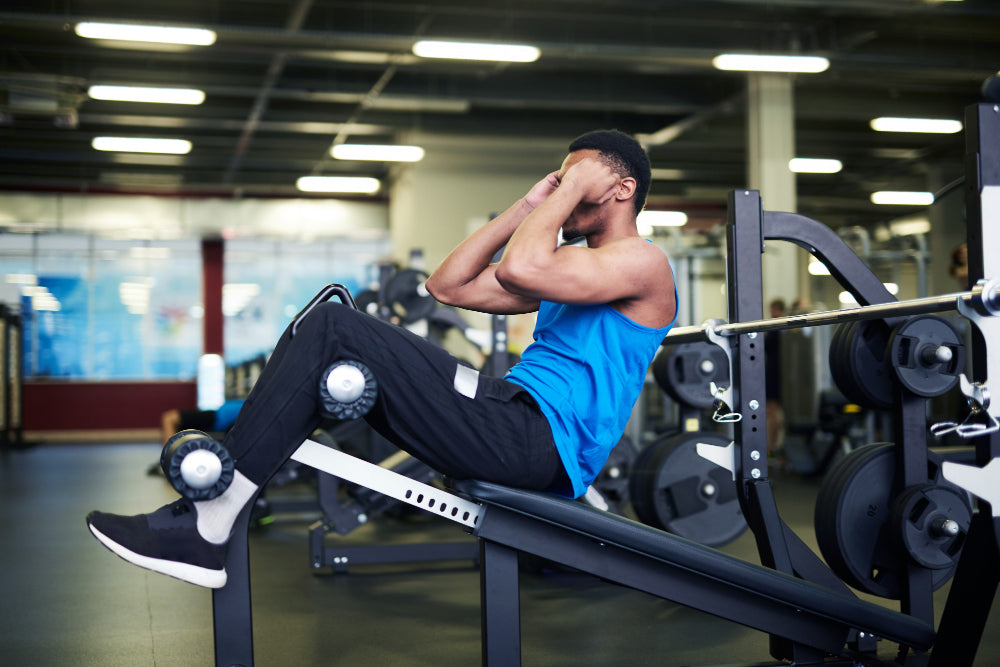Decline Bench Press: A Comprehensive How-To Guide


The decline bench press is a strength-training exercise that specifically targets the lower part of the pectoral muscles. Unlike the more common flat bench press, which engages the entire chest, the decline bench press shifts the focus towards the lower chest and involves additional muscle groups, such as the triceps and deltoids, albeit to a lesser extent. Incorporating this exercise into a routine can diversify the stimuli to the muscle groups, potentially leading to enhanced muscular development and strength across the chest area.

The primary muscle group targeted by the decline bench press is the lower pectoralis major. The orientation of the bench, typically set between a 15 to 30-degree decline, shifts the load more towards the lower chest. This is supported by electromyography (EMG) studies, which show increased activation in this region compared to flat or incline presses. Secondary muscles involved include the triceps brachii and the anterior deltoids, which assist in the pressing movement, though their activation is less than that seen in the flat or incline press due to the angle of the exercise.
The decline bench press offers a variation that can lead to increased muscular hypertrophy and strength by targeting muscle fibres that are less engaged in other forms of bench pressing. Dr. Angela Foster, a sports medicine specialist, notes that "While the flat bench press is effective for overall chest development, the decline bench press is particularly beneficial for focusing on the lower pectorals, an area that often requires more specific targeting in advanced bodybuilding routines." Comparative studies suggest that while all forms of bench pressing support chest development, the decline angle can reduce stress on the shoulder joints, potentially decreasing the risk of injury.
The decline bench press requires a specialised bench capable of being set to a decline. The optimal angle for the decline bench press varies between 15 to 30 degrees below horizontal. This range is considered ideal for maximising engagement of the lower chest muscles while minimising discomfort and risk of lower back strain.
Both barbells and dumbbells can be used for the decline bench press, each offering distinct advantages. Barbells allow for heavier weights to be lifted, promoting greater strength gains. Dumbbells, on the other hand, require more stabilisation, which can help in strengthening the smaller, supporting muscles around the shoulders and improving muscle balance. According to Dr. Foster, "Using dumbbells for the decline press increases the demand on individual muscle stabilisation, which can be very beneficial for those looking to improve overall chest symmetry and reduce muscle imbalances."
Safety is paramount when performing any bench press variation. Weight clips should always be used on barbells to prevent the weights from sliding off, which can cause serious injuries. Additionally, the presence of a spotter is crucial, particularly when working with heavier weights. The spotter can provide assistance if the lifter is unable to complete a rep, helping to prevent the bar from dropping on the chest or neck.
To set up for the decline bench press, adjust the bench to the desired angle, ensuring that it is securely locked in place. The bench should be stable with no wobbling, as instability can lead to injuries.
When performing the decline bench press, lie down on the bench with your eyes directly under the barbell. Secure your legs at the end of the bench to stabilise your lower body and prevent slipping. It is essential that your feet remain flat on the floor or firmly secured on the platform, depending on the bench design. The back should be slightly arched, and the buttocks in contact with the bench throughout the exercise to maintain proper spinal alignment.
Position the barbell or dumbbells so that they are directly above your lower chest when lifted. This positioning ensures that the focus remains on the lower pectorals. Start with a manageable weight to ensure proper form and technique before progressing to heavier weights. As Dr. Foster advises, "Starting with a lower weight allows the lifter to focus on technique and muscle engagement, which is crucial for preventing injuries and maximising the effectiveness of the exercise."
To perform the decline bench press effectively, follow these detailed steps:
Tips for Maintaining Form to Prevent Injuries:
List of Frequent Errors Beginners Make:
How to Correct These Mistakes:
Different Grips and Equipment Variations:
How Variations Can Target Muscles Differently:
Suggestions for Integration:
Recommended Sets, Reps, and Frequency:
Importance of a Spotter and How to Spot Effectively:
When to Avoid the Decline Bench Press:
The decline bench press is often less popular than its flat and incline counterparts primarily because it is perceived as less essential for overall chest development. Many people believe that the flat bench press alone is sufficient for building the chest muscles. Additionally, the setup for the decline bench press can be more cumbersome, and some find the angle uncomfortable or feel it puts unnecessary stress on their lower back and shoulders.
The difficulty of the decline bench press compared to the flat bench press can vary depending on the individual's body mechanics and strength levels. Generally, the decline bench press is not necessarily harder; in fact, many lifters find they can lift more weight in the decline position due to the mechanics of the movement which allow for greater leverage and reduced range of motion. However, stabilising the body and maintaining proper form can be more challenging due to the angle.
Yes, many bodybuilders include the decline bench press in their training regimes. The decline bench press is effective for targeting the lower portion of the pectoral muscles, which can help in achieving a more fully developed chest. The inclusion of this exercise can lead to enhanced muscle symmetry and aesthetics, which are crucial in bodybuilding. However, the frequency and emphasis on the decline bench press can vary widely among bodybuilders depending on their specific training goals and the responses of their bodies to different exercises. Continue reading to learn What Does PR Mean in the Gym?
The decline bench press is a valuable addition to any chest-focused workout regimen, offering specific benefits for lower pectoral development. By following the guidelines outlined above, including proper execution, safety protocols, and integration into broader workout plans, individuals can effectively enhance their strength and muscle development while minimising the risk of injury.









